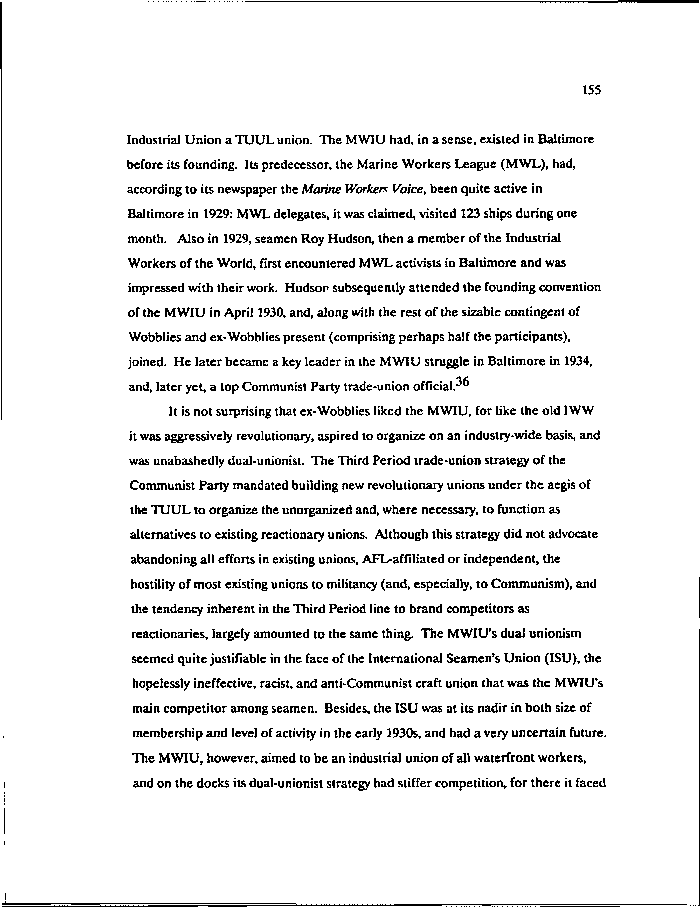|
155
Industrial Union a TUUL union. The MW1U had, in a sense, existed in Baltimore
before its founding. Its predecessor, the Marine Workers League (MWL), had,
according to its newspaper the Marine Worker* Voice, been quite active in
Baltimore in 1929: MWL delegates, it was claimed, visited 123 ships during one
month. Also in 1929, seamen Roy Hudson, then a member of the Industrial
Workers of the World, first encountered MWL activists in Baltimore and was
impressed with their work. Hudson subsequently attended the founding convention
of the MWIU in April 1930, and, along with the rest of the sizable contingent of
Wobblies and ex-Wobblies present (comprising perhaps half the participants),
joined. He later became a key leader in the MWIU struggle in Baltimore in 1934,
"\(\
and, later yet, a top Communist Party trade-union official.
It is not surprising that ex-Wobblies liked the MWIU, for like the old IWW
it was aggressively revolutionary, aspired to organize on an industry-wide basis, and
was unabashedly dual-unionist. The Third Period trade-union strategy of the
Communist Party mandated building new revolutionary unions under the aegis of
the TUUL to organize the unorganized and, where necessary, to function as
alternatives to existing reactionary unions. Although this strategy did not advocate
abandoning all efforts in existing unions, AFL-affiliated or independent, the
hostility of most existing unions to militancy (and, especially, to Communism), and
the tendency inherent in the Third Period line to brand competitors as
reactionaries, largely amounted to the same thing. The MWIU's dual unionism
seemed quite justifiable in the face of the International Seamen's Union (ISU), the
hopelessly ineffective, racist, and anti-Communist craft union that was the MWIU's
main competitor among seamen. Besides, the ISU was at its nadir in both size of
membership and level of activity in the early 1930s, and had a very uncertain future.
The MWIU, however, aimed to be an industrial union of all waterfront workers,
and on the docks its dual-unionist strategy had stiffen competition, for there it faced
|

